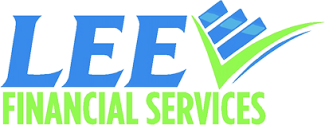Business Owners
Why Employee Benefits Planning is Important
The very success of your company could actually depend on the types of benefits package you offer your employees. With so many of your peer and other businesses competing for good talent, it is often not the pay-rate that attracts good employees, but the complete benefits package they receive.
But there’s more to employee benefits than just enticing great talent to join your company. If your benefits package doesn’t keep pace with the industry you are in, chances are that your competitors will win over talented workers from you. All your investment in training and equipping them with business knowledge and skills will become an expense to be written off—instead of an asset to capitalize on!
What We Can Do for You
While you focus on encouraging your clients and business associates to establish profitable business relationships with your company, our Employee Benefits specialists will help find a package of employee benefits that will motivate your workforce to work hard and stay committed to your ideals. Our emphasis is always on:
-
Finding personalized strategies, as opposed to cookie-cutter plans
-
Recommending strategies that help you reduce benefits management and administration costs across the company
-
Offering benefits packages that are in line with what your industry peers are offering their employees
-
Proposing plans that are low on red tape and high on delivering real value to your employees: Targeted benefits. Quicker processing. Seamless and secure access. Transparent reporting
-
Advising on plans that don’t just meet today’s needs, but that can continue to evolve as your business grows and matures
Before we bring forward recommendations for an ideal Employee Benefits plan for your business, we’ll first understand what it is that you wish to accomplish from the package. We then review the existing landscape of employee benefits, and bring forward recommendations that will best meet the needs of your company.
Here are just some of the areas that our Employee Benefits team can assist you in finding a strategy to help your business grow, and to keep your workforce motivated and committed:
-
401(k)
-
Simplified Employee Pension (SEP)
-
SIMPLE Plan
-
Traditional Group Benefits plans
-
Employee/dependent Life Insurance coverage
-
Short-term and long-term disability insurance
-
Critical illness insurance
-
Staff/Executive reimbursement plans
-
Insuring against accidental death or dismemberment
-
Prescription and non-prescription drug coverage
-
Professional medical services coverage, including Physiotherapy, Chiropractic and Psychological assistance
-
Dental and Vision care
-
Hospital coverage
-
Health-care spending accounts
-
Employee/dependent assistance programs (Grief counselling, Substance-abuse therapy, Mental Health advisories, Elder-Care counselling)
-
Emergency travel assistance planning
So, what does it mean for you and your business to have a great Employee Benefits plan? Better-quality employee attraction. Higher employee morale. Greater employee productivity. Stronger employee retention.
Small Business Retirement Plans
The creation of the Simplified Employee Pension (SEP) and the Savings Incentive Match Plan for Employees (SIMPLE) affords smaller businesses with a way to offer their employees a retirement plan. The SEP and SIMPLE were designed for businesses with less than 100 employees and are less costly to administer than a 401(k). For the employees, they are both easy to understand and provide a convenient way to save for retirement.
As qualified retirement plans, SEPs and SIMPLEs enjoy the same tax treatment as other plans. Contributions by employees and employers are tax deductible or made on a pre-tax basis. The accumulation inside the accounts grows tax deferred. The many of the same restrictions apply as well. Withdrawals made prior to age 59 ½ may be subject to a penalty.
As with all defined contribution plans, the future retirement benefit is uncertain as it depends on the amount of contributions, how long they accumulate, and the rate of return on the account over that period of time. At the time of distribution, withdrawals are taxed as ordinary income with no allowance for 10-year averaging as is available through a 401(k).
Simplified Employee Pension (SEP)
A SEP is easy to setup even easier to administer. Each employee established their own SEP-IRA to which the employer contributions are made. Although the employer is not required to make a contribution each year, when one is made it must be contributed to all employees over the age of 21, part-time included, based on 25% of covered compensation.1
The employees manage their own SEP-IRAs which can be invested in mutual funds, money market funds, or fixed investments. The funds are always 100% vested so they can be accessed immediately by the employee (subject to an early withdrawal penalty). Employees with SEP-IRAs can also invest in their own traditional or Roth IRA subject to some income limitations.
For employers, their only responsibility is to make the contribution by their tax filing deadline. There is no administration of the accounts and there is no forfeiture provision to manage.
SIMPLE Plan
In a SIMPLE Plan, employees establish their own IRA to which they can electively make tax deductible contributions. Employees who earn at least $5,000 during any two prior years as well as the current year are eligible to participate on a voluntary basis. The maximum amount that can be contributed is $11,500 or 100% of their compensation whichever is less. 2
Employee funds are 100% vested, however, in addition to the normal early withdrawal penalty of 10%, if a withdrawal is made within the first two years of participation, the penalty is 25% unless any exceptions apply.
The employer must match the employee’s contributions up to 3% of their elective deferral, or 2% of all compensation for all employees whether they defer or not. 3
There is another version of a SIMPLE called the 401(k) version which is structured much like the IRA version. The advantage of the 401(k) version to the employer is that it can establish stricter requirements for plan eligibility which could reduce the amount of matching contributions. The disadvantage is that the same ERISA reporting rules apply to a SIMPLE 401(k) as they do the regular 401(k), so it can be more costly to administer.
For additional information on small business retirement plans, contact us today.
Traditional 401(k) or Roth 401(k) plans: Like individual and Roth IRAs, employers can offer staff traditional 401(k) plans or Roth 401(k) plans to their employees. In some cases, for instance where an employer matches 100% of your contribution to these retirement savings accounts, it might make sense to join the plan. However, the funds are invested at the discretion of the fund manager, and you (the employee) might have no say in those decisions. We’ll help you decide whether you should participate or opt out of these plans.
1 Contributions are limited to 25% of a maximum of $245,000 in 2010 or $49,000.
2 $11,500 is the current maximum and the amount is indexed for inflation.
3 An employer may make less than the 3% contribution for two years out of five year period but it cannot be less than 1%

